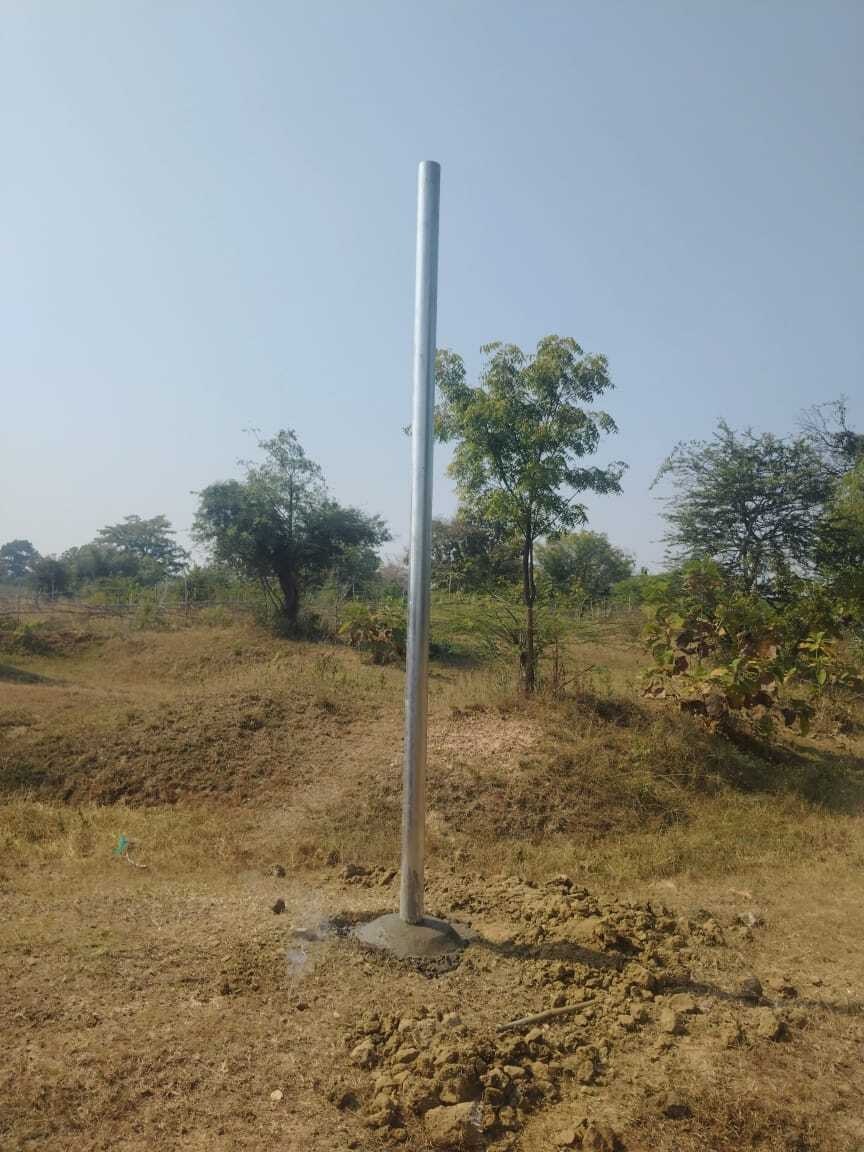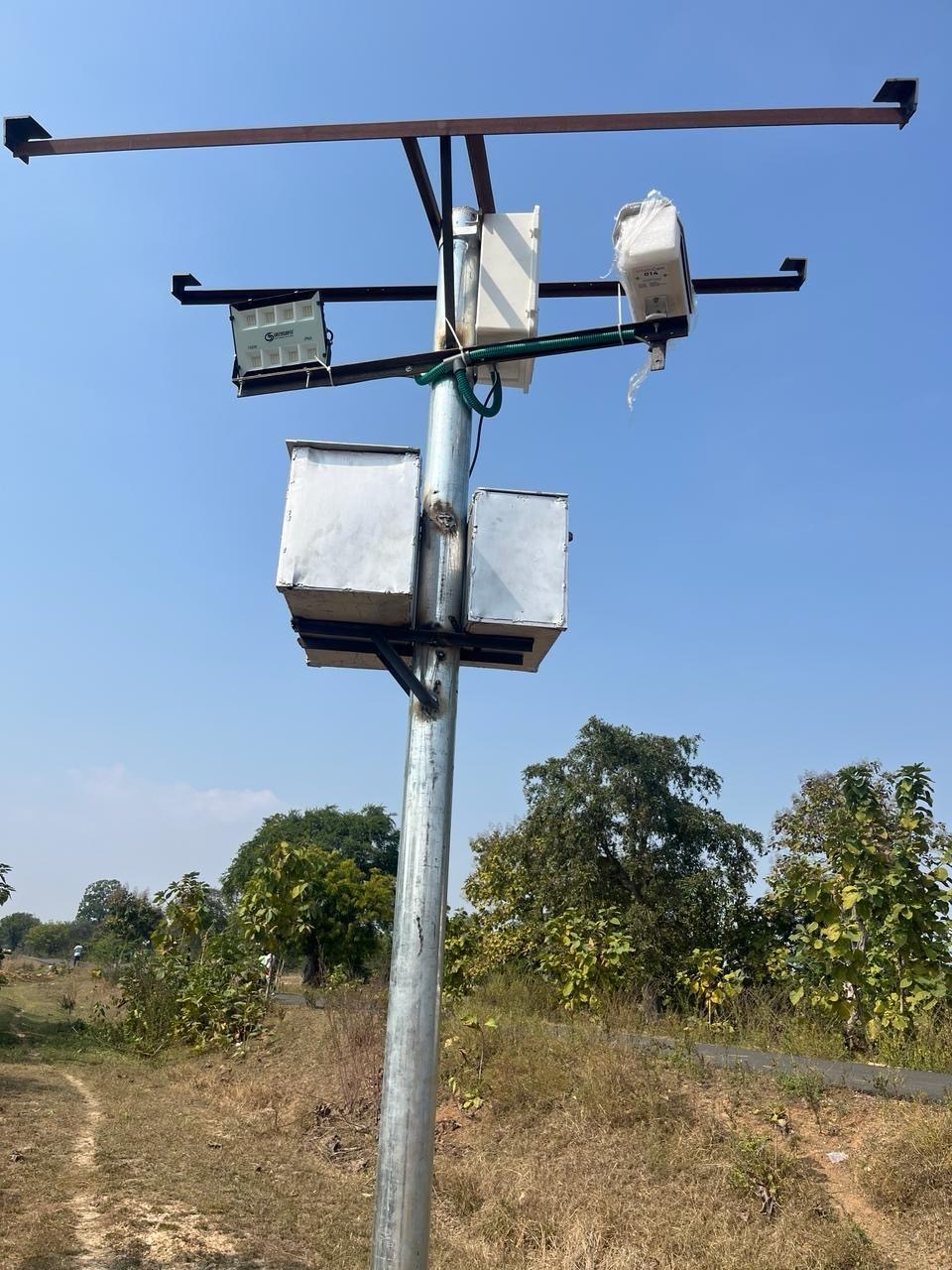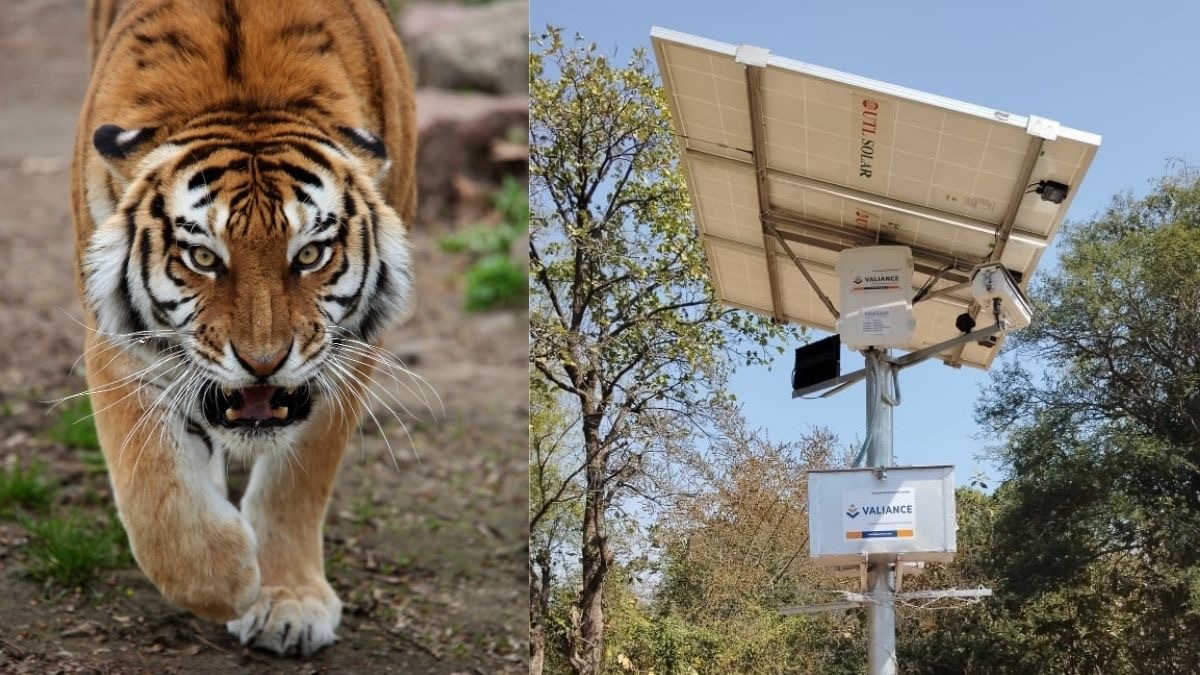Living harmoniously has long been a hallmark of Indian civilization. In the realms of lore and antiquity, beasts were revered as divine entities and served as allies to monarchs in safeguarding their realms.
Lately, confrontations between humans and wildlife have escalated, propelled by dwindling habitats or, conversely, due to a burgeoning in populations of species such as tigers—a development that, paradoxically, fills us with pride. This uptick in conflicts between humans and animals casts a shadow over the age-old principle of peaceful cohabitation.
In response to these challenges, the advent of technology has introduced solutions aimed at fostering peaceful coexistence, notably through the Human-Animal Conflict Mitigation System (HACMS).
HACMS is bifurcated into hardware and software components, with our focus being on the hardware aspect of the system.
The installation of HACMS hardware is a methodical process that begins with the careful selection of a site and concludes with the strategic installation of camera-equipped poles, reinforced with barbed wire and protective coatings to ensure longevity
Herein, we outline the steps involved in the hardware setup process.

1. Identification of Site:
- Analysing Previous Data: Data obtained from camera traps installed in the area provide valuable insights into wildlife movements and areas prone to human wildlife conflicts. Patterns of wildlife behaviour and frequent conflict zones are identified through this analysis.
- Consideration of Environmental Factors: Factors such as the availability of mobile communication networks are essential for real time monitoring and communication. Additionally, ensuring full coverage of sunlight for solar panel charging is critical for the uninterrupted operation of the system.
2. Excavation of Pits:
- Dimensional Requirements: Pits are excavated to specific dimensions to ensure stability and proper anchoring of the poles. The depth of 3 feet provides sufficient depth for the pole’s foundation, while dimensions of 2 feet by 2 feet allow for adequate space for concrete filling and stability.

Figure 2: Excavated pit
3. Erection of Pole:
- Selection of Materials: Galvanized iron (GI) poles are chosen for their durability and resistance to corrosion, making them suitable for outdoor installations. The thickness of 5mm ensures the strength needed to support the various components of the HACMS. While for the places where elephant is existing concrete poles are advised. The poles are fixed with concrete.
- Height Consideration: Poles are erected to a height of 12 feet above ground level to provide an elevated position for mounting cameras and other accessories, offering a broader perspective for monitoring wildlife activities. For elephant corridors concrete poles of height 20 feet above ground are advised.

Figure 3: Mounted Pole
4. Mounting of Solar Panels:
- Fabricated Stand Design: Fabricated stands are custom-designed to securely hold the solar panels in place atop the poles. These stands are engineered to withstand wind loads and ensure the optimal angle for solar exposure.
- Wiring and Connection: Proper wiring and connection of solar panels to the power and connectivity box ensure efficient energy transfer and charging of batteries, even in remote areas with limited access to electricity.
5. Mounting of SMART Camera and Accessories:
- Strategic Positioning: SMART cameras are strategically mounted on an angle to provide optimal coverage of the monitored area. The angle and height are carefully determined to capture clear images and videos of wildlife activities.
- Integration of LED Lights and Hooters: LED lights and hooters are integrated into the system. The hooters provide auditory alerts when wildlife is detected. This notifies nearby communities of potential conflicts.
6. Battery and Inverter UPS Mounting:
- Stand Fabrication: Stands are fabricated to securely hold the batteries and inverter UPS systems at a height of 8 feet from the ground. This elevation helps protect the components from potential damage caused by wildlife or environmental factors.
- Wiring and Integration: Proper wiring and integration of batteries and inverter UPS systems ensure seamless operation and backup power supply during periods of low sunlight or inclement weather.

Figure 4: Pole with Solar panel Fabrication, camera and accessories mounted
7. Securing the Pole with Barbed Wire:
- Deterrence against Tampering: Wrapping barbed wire around the poles provides an additional layer of security, deterring unauthorized access and vandalism. This helps safeguard the integrity of the HACMS hardware and ensures uninterrupted monitoring of wildlife activities.

Figure 5: Pole secured with barbed wire
8. Painting:
- Protective Coating: Poles and other fabricated parts are painted with weather-resistant coatings to protect against corrosion, UV damage, and harsh environmental conditions. Proper surface preparation and application techniques ensure long-lasting protection and aesthetic appeal.
The installation phase necessitates the use of a tractor, a critical asset given the challenging terrain and conditions encountered in forested areas. Tractors, equipped with their robust load-bearing capabilities, emerge as the sole viable means of transportation, contingent upon the expertise of a skilled driver. Such a driver possesses the finesse required to navigate the demanding and treacherous terrain effectively.
Given the inherently unforgiving nature of forest landscapes, ensuring safety during the installation process is paramount. This necessitates conducting operations under the vigilant supervision of forest officials and alongside a cohesive team. Adhering to these precautions ensures the well-being of all involved while facilitating the smooth progression of installation activities.
In the face of escalating human-animal conflicts, the implementation of the Human-Animal Conflict Mitigation System (HACMS) offers a beacon of hope for restoring the ancient Indian ethos of harmonious coexistence between humans and wildlife. This article has meticulously outlined the comprehensive process involved in the hardware installation of HACMS, emphasizing its potential to significantly reduce confrontations through strategic monitoring and early warning systems. From site identification to the final protective measures, each step underscores a blend of technological innovation and practical wisdom, aiming to safeguard both human and animal lives. As we advance, the fusion of such technologies with traditional knowledge could herald a new era of conflict mitigation, ensuring the safety and prosperity of all beings sharing our planet. The journey towards peaceful coexistence is complex and fraught with challenges, yet, with each successful HACMS installation, we move closer to a future where humans and animals can thrive together, respecting the delicate balance of nature’s web.
“Discover the impact of our HACMS hardware in the field with ‘Guardians of Harmony,’ a project showcasing our cutting-edge approach to preserving peace between humans and wildlife. Dive into the details and successes of this real-world application here
Piyush is a seasoned professional with over 14 years of extensive experience blending technical and administrative expertise. He possess a deep understanding of transformative technologies, including IIoT (Industrial Internet of Things), IoT (Internet of Things), data analytics, artificial intelligence (AI), and machine learning (ML). His proficiency in these areas allows him to leverage technological advancements effectively, driving innovation and delivering optimal solutions to clients.




